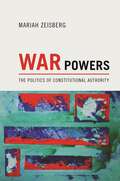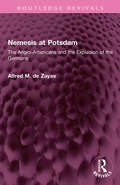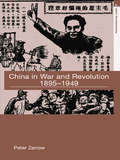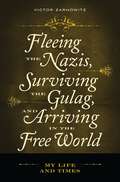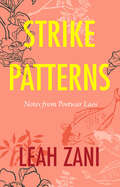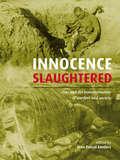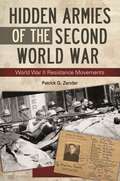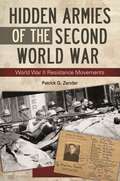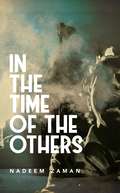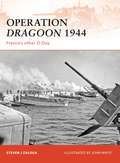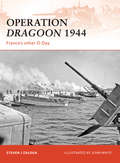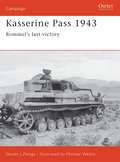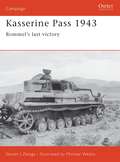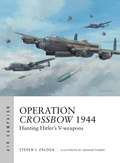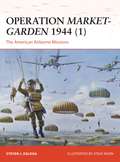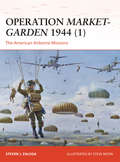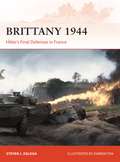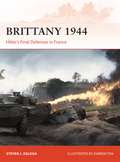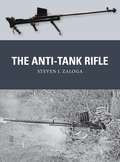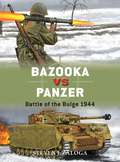- Table View
- List View
War Powers: The Politics of Constitutional Authority
by Mariah ZeisbergArmed interventions in Libya, Haiti, Iraq, Vietnam, and Korea challenged the US president and Congress with a core question of constitutional interpretation: does the president, or Congress, have constitutional authority to take the country to war? War Powers argues that the Constitution doesn't offer a single legal answer to that question. But its structure and values indicate a vision of a well-functioning constitutional politics, one that enables the branches of government themselves to generate good answers to this question for the circumstances of their own times. Mariah Zeisberg shows that what matters is not that the branches enact the same constitutional settlement for all conditions, but instead how well they bring their distinctive governing capacities to bear on their interpretive work in context. Because the branches legitimately approach constitutional questions in different ways, interpretive conflicts between them can sometimes indicate a successful rather than deficient interpretive politics. Zeisberg argues for a set of distinctive constitutional standards for evaluating the branches and their relationship to one another, and she demonstrates how observers and officials can use those standards to evaluate the branches' constitutional politics. With cases ranging from the Mexican War and World War II to the Cold War, Cuban Missile Crisis, and Iran-Contra scandal, War Powers reinterprets central controversies of war powers scholarship and advances a new way of evaluating the constitutional behavior of officials outside of the judiciary.
War Powers: The Politics of Constitutional Authority
by Mariah ZeisbergArmed interventions in Libya, Haiti, Iraq, Vietnam, and Korea challenged the US president and Congress with a core question of constitutional interpretation: does the president, or Congress, have constitutional authority to take the country to war? War Powers argues that the Constitution doesn't offer a single legal answer to that question. But its structure and values indicate a vision of a well-functioning constitutional politics, one that enables the branches of government themselves to generate good answers to this question for the circumstances of their own times. Mariah Zeisberg shows that what matters is not that the branches enact the same constitutional settlement for all conditions, but instead how well they bring their distinctive governing capacities to bear on their interpretive work in context. Because the branches legitimately approach constitutional questions in different ways, interpretive conflicts between them can sometimes indicate a successful rather than deficient interpretive politics. Zeisberg argues for a set of distinctive constitutional standards for evaluating the branches and their relationship to one another, and she demonstrates how observers and officials can use those standards to evaluate the branches' constitutional politics. With cases ranging from the Mexican War and World War II to the Cold War, Cuban Missile Crisis, and Iran-Contra scandal, War Powers reinterprets central controversies of war powers scholarship and advances a new way of evaluating the constitutional behavior of officials outside of the judiciary.
Nemesis at Potsdam: The Anglo-Americans and the Expulsion of the Germans (Routledge Revivals)
by Alfred M. ZayasFirst published in 1979, Nemesis at Potsdam discusses the expulsion and spoliation of the Germans from most of central and easter Europe during the Second World War, a process which over two million did not survive. How did this extraordinary event come about? Was it necessary for the peace of Europe? What role did Britain and the United States play in authorizing the ‘transfer’? The book answers these questions and relates the integration of the German expellees to the phenomenal resurgence of West Germany, and traces the development of Ostpolitik and détente through to the Helsinki Declaration. It will be of interest to students of history, international relations, and political science.
Nemesis at Potsdam: The Anglo-Americans and the Expulsion of the Germans (Routledge Revivals)
by Alfred M. ZayasFirst published in 1979, Nemesis at Potsdam discusses the expulsion and spoliation of the Germans from most of central and easter Europe during the Second World War, a process which over two million did not survive. How did this extraordinary event come about? Was it necessary for the peace of Europe? What role did Britain and the United States play in authorizing the ‘transfer’? The book answers these questions and relates the integration of the German expellees to the phenomenal resurgence of West Germany, and traces the development of Ostpolitik and détente through to the Helsinki Declaration. It will be of interest to students of history, international relations, and political science.
China in War and Revolution, 1895-1949
by Peter ZarrowProviding historical insights essential to the understanding of contemporary China, this text presents a nation's story of trauma and growth during the early twentieth century. It explains how China's defeat by Japan in 1895 prompted an explosion of radical reform proposals and the beginning of elite Chinese disillusionment with the Qing government. The book explores how this event also prompted five decades of efforts to strengthen the state and the nation, democratize the political system, and build a fairer and more unified society.Peter Zarrow weaves narrative together with thematic chapters that pause to address in-depth themes central to China's transformation. While the book proceeds chronologically, the chapters in each part examine particular aspects of these decades in a more focused way, borrowing from methodologies of the social sciences, cultural studies, and empirical historicism. Essential reading for both students and instructors alike, it draws a picture of the personalities, ideas and processes by which a modern state was created out of the violence and trauma of these decades.
China in War and Revolution, 1895-1949
by Peter ZarrowProviding historical insights essential to the understanding of contemporary China, this text presents a nation's story of trauma and growth during the early twentieth century. It explains how China's defeat by Japan in 1895 prompted an explosion of radical reform proposals and the beginning of elite Chinese disillusionment with the Qing government. The book explores how this event also prompted five decades of efforts to strengthen the state and the nation, democratize the political system, and build a fairer and more unified society.Peter Zarrow weaves narrative together with thematic chapters that pause to address in-depth themes central to China's transformation. While the book proceeds chronologically, the chapters in each part examine particular aspects of these decades in a more focused way, borrowing from methodologies of the social sciences, cultural studies, and empirical historicism. Essential reading for both students and instructors alike, it draws a picture of the personalities, ideas and processes by which a modern state was created out of the violence and trauma of these decades.
Fleeing the Nazis, Surviving the Gulag, and Arriving in the Free World: My Life and Times (Non-ser.)
by Victor ZarnowitzVictor Zarnowitz is a world-famous economist. Victor Zarnowitz is also a man who grew up in the Polish town of Oswiecim, known in German as Auschwitz. Zarnowitz and his brother fled the area as the Nazis advanced in September 1939. Moving eastward, he landed right in the arms of the Soviets and was sent to a Siberian Gulag. How did this brilliant young man, who nearly died at the hands of the Soviets, end up a renowned University of Chicago economist? That's exactly what this inspiring, lyrical memoir—told in simple, captivating prose—is all about.The recipient of many prizes and honors, Zarnowitz is still, at age eighty-seven, one of the six economists who decide officially that the U.S. is in a recession. He is also a captivating writer and his memoir a thrilling page turner: -In September 1939 Victor and his brother walked the entire width of Poland with the blitzkrieg just behind them. They ran right into oncoming Soviet troops. Zarnowitz was trapped at the junction of the two most fearsome armies the world had ever seen. He was literally standing in the center point of history.-The Soviets considered Polish refugees prisoners of war. In 1940, they transported Zarnowitz and his brother thousands of miles north and put them to work in Stalin's oldest Gulag. They earned their daily gruel and bread crusts by trying to meet impossible work quotas.The last third of the book brings the story up to date, telling, in a non-technical manner, of Zarnowitz's life in America and his professional career. It includes his observations of other economists and their ideas, his own contributions to business-cycle theory and economic indicators, and his thoughts on more than a half-century of American history.While memoirs of the Holocaust are plentiful, the Jewish experience in Stalin's Gulags has been virtually forgotten. Weaving politics and economics into the harrowing tale of his personal journey, Zarnowitz's inspiring life story provides a priceless perspective on some of the most traumatic upheavals of the 20th century—and on the resilience and power of the human spirit.
Strike Patterns: Notes from Postwar Laos
by Leah ZaniA strike pattern is a signature of violence carved into the land—bomb craters or fragments of explosives left behind, forgotten. In Strike Patterns, poet and anthropologist Leah Zani journeys to a Lao river community where people live alongside such relics of a secret war. With sensitive and arresting prose, Zani reveals the layered realities that settle atop one another in Laos—from its French colonial history to today's authoritarian state—all blown open by the war. This excavation of postwar life's balance between the mundane, the terrifying, and the extraordinary propels Zani to confront her own explosive past. From 1964 to 1973, the United States carried out a covert air war against Laos. Frequently overshadowed by the war with Vietnam, the Secret War was the longest and most intense air war in history. As Zani uncovers this hidden legacy, she finds herself immersed in the lives of her hosts: Chantha, a daughter of war refugees who grapples with her place in a future Laos of imagined prosperity; Channarong, a bomb technician whose Thai origins allow him to stand apart from the battlefields he clears; and Bounmi, a young man who has inherited his bomb expertise from his father but now struggles to imagine a similar future for his unborn son. Wandering through their lives are the restless ghosts of kin and strangers. Today, much of Laos remains contaminated with dangerous leftover explosives. Despite its obscurity, the Secret War has become a shadow model for modern counterinsurgency. Investigating these shadows of war, Zani spends time with silk weavers and rice farmers, bomb clearance crews and black market war scrap traders, ritual healers and survivors of explosions. Combining her fieldnotes with poetry, fiction, and memoir she reflects on the power of building new lives in the ruins.
Innocence Slaughtered: Gas and the Transformation of Warfare and Society
by Jean Pascal ZandersThis collaborative work investigates the unfolding catastrophe that the unleashing of chlorine against the Allied positions meant for individual soldiers and civilians. It describes the hesitation on the German side about the effectiveness, and hence impact on combat operations of the weapon whilst reflecting on the lack of Allied response to the many intelligence pointers that something significant was afoot.It goes on to describe the massive transformation that societies were undergoing as a consequence of industrialisation, science and technology, and the impact these trends were to have on the emergence of what we know today as 'total war'. Chemical warfare pitted the brightest minds from the various belligerents against each other and in some ways this competition revealed early thinking about intellectual superiority that was to define the decades after the Armistice. The ability to survive in a chemically contaminated environment was proof of a higher level of achievement. In simple terms, chemical defence equalled survival of the fittest.
Hidden Armies of the Second World War: World War II Resistance Movements
by Patrick G. ZanderA comprehensive and compelling history of the resistance movements that operated in every German-occupied nation between 1939 and 1941.Even though much of Europe eventually succumbed to the Nazis during World War II, many Europeans defiantly resisted occupation in every way possible. This captivating book provides a survey of these resistance movements during the period of Axis occupation and recounts the ways in which unarmed citizens undermined Nazi efforts at domination. A thorough description of the Axis conquest of Europe, the formation of the Special Operations Executive in Britain, and the Office of Strategic Services in the United States provides a backdrop for this turbulent time in history.Chapters cover the resistance organizations, their leaders, and other key individuals behind their operations. The book details the movement's furtive tactics that included spreading information, providing the Allies with key intelligence, conducting industrial sabotage, destroying bridges and factories, and fighting behind the lines. Case studies of resistance operations in France, Norway, Holland, Denmark, Poland, Czechoslovakia, the Soviet Union, the Balkans, Greece, Italy, and within Nazi Germany itself show the scope and breadth of the resistance movement throughout the world.
Hidden Armies of the Second World War: World War II Resistance Movements
by Patrick G. ZanderA comprehensive and compelling history of the resistance movements that operated in every German-occupied nation between 1939 and 1941.Even though much of Europe eventually succumbed to the Nazis during World War II, many Europeans defiantly resisted occupation in every way possible. This captivating book provides a survey of these resistance movements during the period of Axis occupation and recounts the ways in which unarmed citizens undermined Nazi efforts at domination. A thorough description of the Axis conquest of Europe, the formation of the Special Operations Executive in Britain, and the Office of Strategic Services in the United States provides a backdrop for this turbulent time in history.Chapters cover the resistance organizations, their leaders, and other key individuals behind their operations. The book details the movement's furtive tactics that included spreading information, providing the Allies with key intelligence, conducting industrial sabotage, destroying bridges and factories, and fighting behind the lines. Case studies of resistance operations in France, Norway, Holland, Denmark, Poland, Czechoslovakia, the Soviet Union, the Balkans, Greece, Italy, and within Nazi Germany itself show the scope and breadth of the resistance movement throughout the world.
In the Time of the Others
by Nadeem ZamanEast Pakistan. March 1971. Imtiaz Khan arrives at his uncle’s house in Dhaka for what he thinks will be a quick visit, only to be held back when the Pakistan Army makes a surprise attack on the University, murdering students and professors in cold blood. As the smell of sulphur and gunpowder become a part of their lives, young pro-independence fighters – the Mukti Bahini – find a haven in the home of Imtiaz’s uncle and aunt, Kamruzzaman and Aisha Chowdhury, and they are swept up in the tide of freedom that drives them all. On the other side, Fazal Shaukat – a young captain in the Pakistan Army with a family name to live up to – finds that the war he has signed up for isn’tgoing away anytime soon. There are things bigger than him or his family at stake, even as Pakistan finds itself torn asunder, Jinnah’s dream turning into a nightmare.Set against the backdrop of a monumental historical event, In the Time of the Others is about what itmeans to live during violent times. Fierce, searingly honest and revealing, this powerful debut explores how lives intersect during a time of war and upheaval, and how violence changes all that is human.
Operation Dragoon 1944: France’s other D-Day (Campaign)
by Steven J. Zaloga John WhiteOperation Dragoon, the Allied landings in southern France on August 15, 1944, was one of the most controversial operations of 1944, leading to a deep divide between United States and British planners. The US objective was to threaten the rear of the German armies occupying France by a landing on the eastern French coast and to push rapidly northward towards Lorraine to meet up with Allied forces bursting out of Normandy. Popular Osprey author Steve Zaloga tells the story of this ultimately successful operation, from the derisive debates between the Allied commanders to the men who hit the beaches and charged ashore to help liberate occupied France.
Operation Dragoon 1944: France’s other D-Day (Campaign #210)
by Steven J. Zaloga John WhiteOperation Dragoon, the Allied landings in southern France on August 15, 1944, was one of the most controversial operations of 1944, leading to a deep divide between United States and British planners. The US objective was to threaten the rear of the German armies occupying France by a landing on the eastern French coast and to push rapidly northward towards Lorraine to meet up with Allied forces bursting out of Normandy. Popular Osprey author Steve Zaloga tells the story of this ultimately successful operation, from the derisive debates between the Allied commanders to the men who hit the beaches and charged ashore to help liberate occupied France.
Kasserine Pass 1943: Rommel's last victory (Campaign #152)
by Steven J. Zaloga Michael WelplyThe North African campaign of November 1942-May 1943 was a baptism of fire for the US Army. After relatively straightforward landings, the US II Corps advanced into Tunisia to support operations by the British 8th Army. Rommel, worried by the prospect of an attack, decided to exploit the inexperience of the US Army and strike a blow against their overextended positions around the Kasserine Pass. However, the Germans were unable to exploit their initial success, and later attacks were bloodily repulsed. The fighting in Tunisia taught the green US Army vital combat lessons, and brought to the fore senior commanders such as Eisenhower, Patton, and Bradley.
Kasserine Pass 1943: Rommel's last victory (Campaign #152)
by Steven J. Zaloga Michael WelplyThe North African campaign of November 1942-May 1943 was a baptism of fire for the US Army. After relatively straightforward landings, the US II Corps advanced into Tunisia to support operations by the British 8th Army. Rommel, worried by the prospect of an attack, decided to exploit the inexperience of the US Army and strike a blow against their overextended positions around the Kasserine Pass. However, the Germans were unable to exploit their initial success, and later attacks were bloodily repulsed. The fighting in Tunisia taught the green US Army vital combat lessons, and brought to the fore senior commanders such as Eisenhower, Patton, and Bradley.
Operation Crossbow 1944: Hunting Hitler's V-weapons (Air Campaign #5)
by Steven J. Zaloga Graham Turner Adam Tooby Bounford.com Bounford.com Paul KimeIn mid-1943, Allied intelligence began to pick up the signs of unusual German construction in remote locations near the Channel Coast. Several massive fortifications were beginning to take shape, and they appeared to be oriented towards London. Allied intelligence codenamed these sites as "Crossbow" and began plans to attack them before they could bombard Britain's capital city. These "Heavy Crossbow" sites for the V-1 and V-2 missiles were supposed to be bomb-proof, but they soon attracted the attention of RAF heavy bombers with the new Tallboy concrete-penetrating bombs. Fully illustrated with commissioned artwork and contemporary photographs, Operation Crossbow 1944 examines the dynamics of the world's first missile war. It also describes the parallel American efforts to develop missiles and assault drones to attack the "Heavy Crossbow" sites, including the Air Force's Aphrodite and Navy Anvil projects.
Operation Market-Garden 1944: The American Airborne Missions (Campaign)
by Steven J. Zaloga Graham TurnerIn the summer of 1944, plans began for a complex operation to seize a Rhine river bridge at Arnhem in the Netherlands. The American portion of the airborne mission was to employ two divisions of the US XVIII Airborne Corps to seize key terrain features that otherwise might delay the advance of British tanks towards the bridge. The 82nd and 101st Airborne Divisions succeeded in their tasks of capturing the vital bridges at Eindhoven at Nijmegen in the face of fierce German resistance. However, the delays caused to the British armored advance, combined with stronger than expected fighting at Arnhem led to the withdrawal of the remnants of the British 1st Airborne Division in one of the Western Allies' most costly defeats of World War II. Contemporary photographs, maps and detailed color artwork complement extensive archival research that reveals the successes of those American airborne missions, largely overshadowed by the failure of the operation as a whole.
Operation Market-Garden 1944: The American Airborne Missions (Campaign)
by Steven J. Zaloga Graham TurnerIn the summer of 1944, plans began for a complex operation to seize a Rhine river bridge at Arnhem in the Netherlands. The American portion of the airborne mission was to employ two divisions of the US XVIII Airborne Corps to seize key terrain features that otherwise might delay the advance of British tanks towards the bridge. The 82nd and 101st Airborne Divisions succeeded in their tasks of capturing the vital bridges at Eindhoven at Nijmegen in the face of fierce German resistance. However, the delays caused to the British armored advance, combined with stronger than expected fighting at Arnhem led to the withdrawal of the remnants of the British 1st Airborne Division in one of the Western Allies' most costly defeats of World War II. Contemporary photographs, maps and detailed color artwork complement extensive archival research that reveals the successes of those American airborne missions, largely overshadowed by the failure of the operation as a whole.
Operation Crossbow 1944: Hunting Hitler's V-weapons (Air Campaign #5)
by Steven J. Zaloga Adam Tooby Bounford.com Bounford.com Mr Graham Turner Paul KimeIn mid-1943, Allied intelligence began to pick up the signs of unusual German construction in remote locations near the Channel Coast. Several massive fortifications were beginning to take shape, and they appeared to be oriented towards London. Allied intelligence codenamed these sites as "Crossbow" and began plans to attack them before they could bombard Britain's capital city. These "Heavy Crossbow" sites for the V-1 and V-2 missiles were supposed to be bomb-proof, but they soon attracted the attention of RAF heavy bombers with the new Tallboy concrete-penetrating bombs. Fully illustrated with commissioned artwork and contemporary photographs, Operation Crossbow 1944 examines the dynamics of the world's first missile war. It also describes the parallel American efforts to develop missiles and assault drones to attack the "Heavy Crossbow" sites, including the Air Force's Aphrodite and Navy Anvil projects.
Brittany 1944: Hitler’s Final Defenses in France (Campaign)
by Steven J. Zaloga Darren TanOne of the prime objectives for the Allies following the D-Day landings was the capture of sufficient ports to supply their armies. The original Overlord plans assumed that ports along the Breton coast would be essential to expansion of the Normandy beach-head. This included the major ports at Brest and on Quiberon Bay.The newly arrived Third US Army (TUSA) under Lt. Gen. George S. Patton was delegated to take on the Brittany mission. In one of the most rapid mechanized advances of the war, TUSA had the ports of Avranches and Quiberon encircled by the second week of August 1944.But changing priorities meant that most of TUSA was redeployed, meaning only a single corps was left to take the Breton port cities. The fight would drag into 1945, long after German field armies had been driven from France. Using full colour maps and artwork as well as contemporary accounts and photographs, Brittany 1944 is the fascinating story of the siege of Germany's last bastions on the French Atlantic coast.
Brittany 1944: Hitler’s Final Defenses in France (Campaign #320)
by Steven J. Zaloga Darren TanOne of the prime objectives for the Allies following the D-Day landings was the capture of sufficient ports to supply their armies. The original Overlord plans assumed that ports along the Breton coast would be essential to expansion of the Normandy beach-head. This included the major ports at Brest and on Quiberon Bay.The newly arrived Third US Army (TUSA) under Lt. Gen. George S. Patton was delegated to take on the Brittany mission. In one of the most rapid mechanized advances of the war, TUSA had the ports of Avranches and Quiberon encircled by the second week of August 1944.But changing priorities meant that most of TUSA was redeployed, meaning only a single corps was left to take the Breton port cities. The fight would drag into 1945, long after German field armies had been driven from France. Using full colour maps and artwork as well as contemporary accounts and photographs, Brittany 1944 is the fascinating story of the siege of Germany's last bastions on the French Atlantic coast.
The Anti-Tank Rifle (Weapon)
by Steven J. Zaloga Johnny Shumate Alan GillilandThe emergence of the tank in World War I led to the development of the first infantry weapons to defend against tanks. Anti-tank rifles became commonplace in the inter-war years and in the early campaigns of World War II in Poland and the Battle of France, which saw renewed use in the form of the British .55in Boys anti-tank rifle - also used by the US Marine Corps in the Pacific. The French campaign made it clear that the day of the anti-tank rifle was ending due to the increasing thickness of tank armour.Nevertheless, anti-tank rifles continued to be used by the Soviets on the Eastern Front with two rifles, the 14.5mm PTRS and PTRD, and were still in widespread use in 1945. They served again with Korean and Chinese forces in the Korean War, and some have even appeared in Ukraine in 2014–15. Fully illustrated and drawing upon a range of sources, this is the absorbing story of the anti-tank rifle, the infantryman's anti-armour weapon during the world wars.
The Anti-Tank Rifle (Weapon)
by Steven J. Zaloga Johnny Shumate Alan GillilandThe emergence of the tank in World War I led to the development of the first infantry weapons to defend against tanks. Anti-tank rifles became commonplace in the inter-war years and in the early campaigns of World War II in Poland and the Battle of France, which saw renewed use in the form of the British .55in Boys anti-tank rifle - also used by the US Marine Corps in the Pacific. The French campaign made it clear that the day of the anti-tank rifle was ending due to the increasing thickness of tank armour.Nevertheless, anti-tank rifles continued to be used by the Soviets on the Eastern Front with two rifles, the 14.5mm PTRS and PTRD, and were still in widespread use in 1945. They served again with Korean and Chinese forces in the Korean War, and some have even appeared in Ukraine in 2014–15. Fully illustrated and drawing upon a range of sources, this is the absorbing story of the anti-tank rifle, the infantryman's anti-armour weapon during the world wars.
Bazooka vs Panzer: Battle of the Bulge 1944 (Duel)
by Steven J. Zaloga Johnny Shumate Alan GillilandWorld War II saw tanks assume a dominant role in warfare, capable of tearing through the enemy lines if left unchecked. To combat the threat posed by these armoured behemoths the United States developed the M1 Anti-Tank Rocket Launcher, better known as the Bazooka. First employed in combat during 1942, the weapon required a great deal of skill and courage to use effectively. By late 1944 it was a mainstay of the US infantry's anti-tank capabilities, alongside towed weapons, anti-tank grenades and other longer-established measures.Focusing on the savage close-quarters fighting between Germany's armoured divisions and the US infantry during the Battle of the Bulge, Steven Zaloga's absorbing study compares and assesses the strengths and limitations of the cutting-edge technology used by both sides. Featuring specially commissioned full-colour artwork and explosive battle reports, this volume casts new light on the evolving nature of infantry-versus-tank combat in the closing months of World War II.
